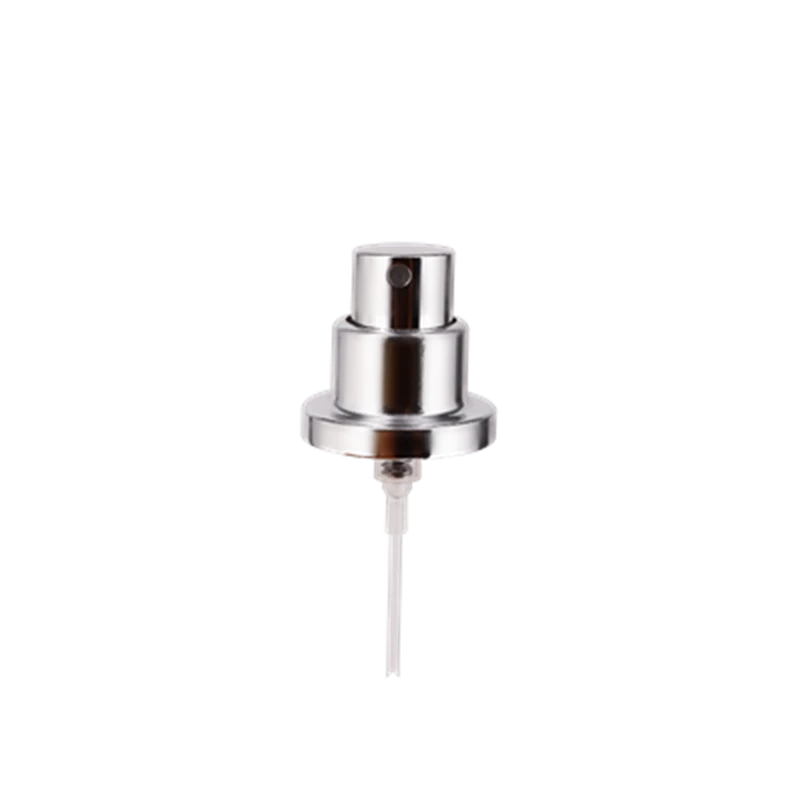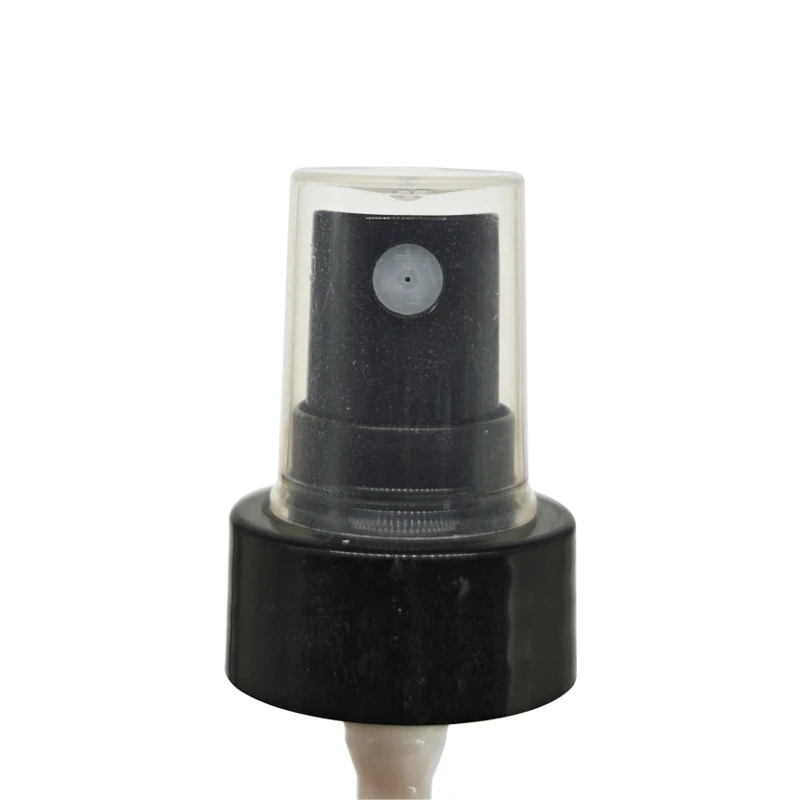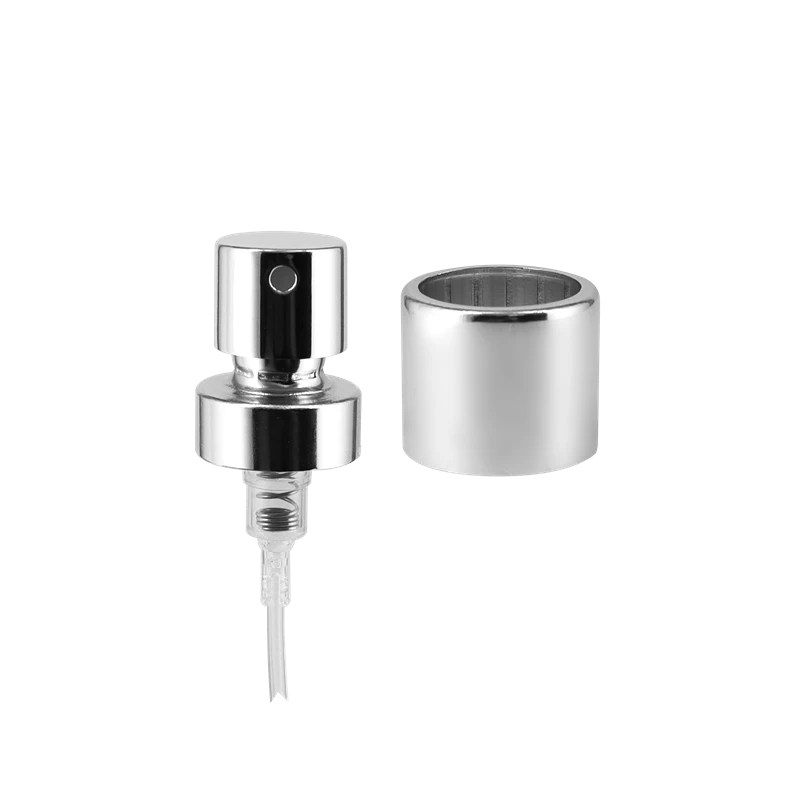Spray Cap
Fragrance Atomizer FEA15 Curled Edge Shiny Silver Collar Fine Mist 0.10ml
18/415 Screw Fine-Mist Perfume Sprayer Metal Shell – Standard & High-Output Option
Mist sprayer 22/410 PP white glossy dose 0.13ml white overcap (Cosmetic&Beauty Products)
Mist sprayer 20/400 PP black glossy dose 0.13ml clear overcap
Mist sprayer 18/400 PP black glossy dose 0.13ml clear overcap
Perfume Sprayer FEA15 Crimp Shiny Silver Aluminum Collar 0.10 mL Dose
Learn More About Spray Cap
What are the common spray modes of the spray cap?
Mainly, there’s atomized spray (fine and even, suitable for perfumes or skincare serums) and beam spray (concentrated spray, suitable for cleansers or hairsprays).
How is the sealing performance of the spray cap guaranteed?
An inner seal is used to closely fit with the glass bottle opening, ensuring that the liquid does not leak or evaporate. Each cap undergoes negative pressure sealing tests before leaving our factory.
Is it compatible with liquids of different viscosities?
Yes. Low viscosity liquids (such as water, perfume) are suitable for standard sprayers; high viscosity liquids (such as essential oils, lotions) require a special spray cap with an enhanced spring and valve.
Can the spray cap match different specifications of glass bottles?
We offer multiple bottle mouth diameters (such as 18mm, 20mm, 22mm) for selection. It is recommended that customers provide the bottle size or sample to ensure a perfect fit.
What should I do if leakage occurs after installation?
First, check: ① Check the bottle neck for cracks; ② Check that the sealing gasket is properly installed; ③ Check that the spray cap is tightened to the specified torque. If the problem persists, replace the sealing assembly.
Does the spray power weaken after a period of use?
This is usually caused by a clogged nozzle. We recommend backflushing the nozzle hole with clean water or alcohol. If this doesn’t work, the internal spring or valve may need to be replaced.
How should the spray cap be cleaned and maintained?
Regularly clean the nozzle and suction tube with a mild solvent (such as purified water or 75% alcohol). Avoid using strong acid or alkaline cleaning agents to prevent corrosion of internal components.





